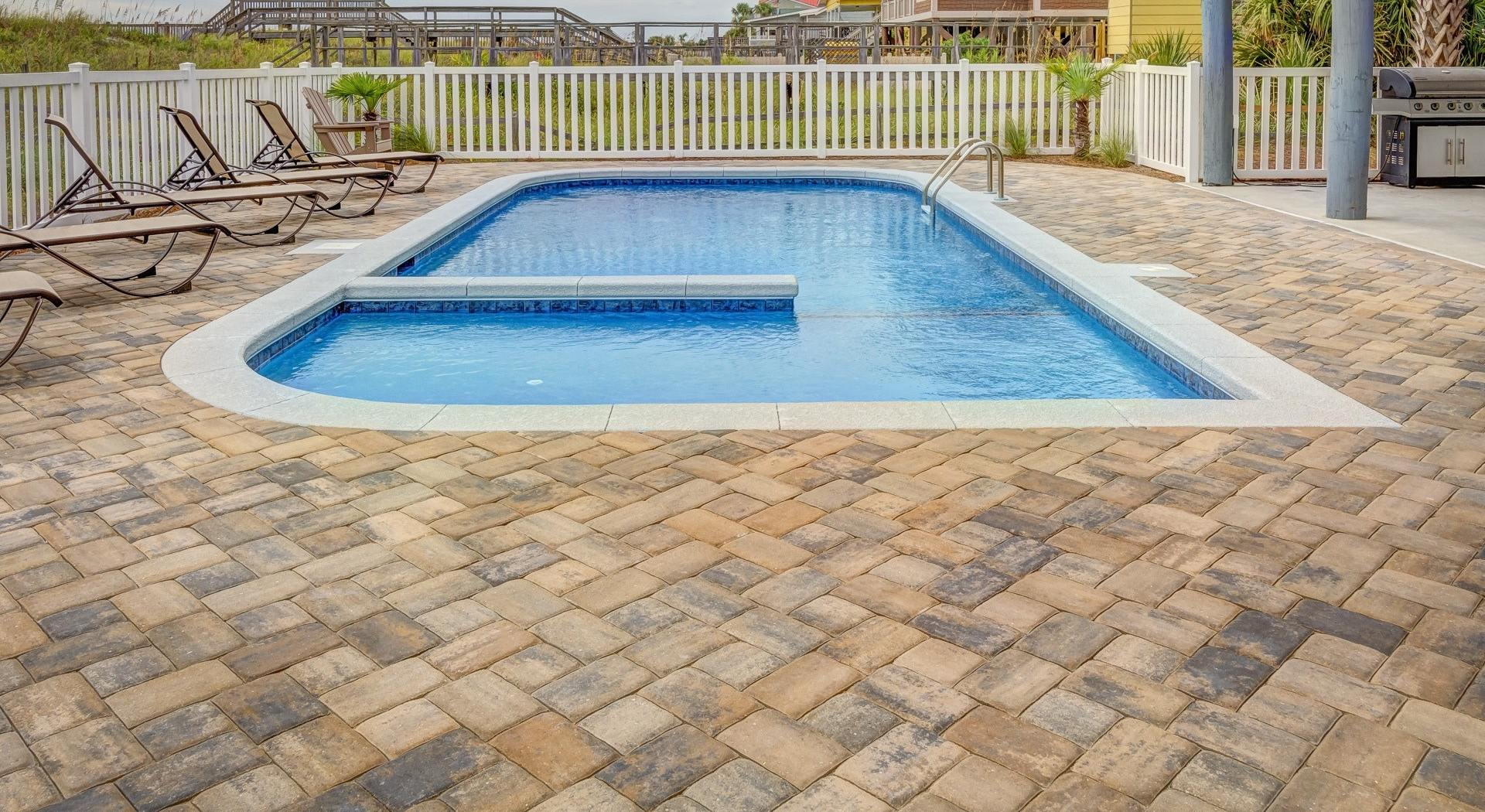Travertine Tile
Travertine tile flooring offers a natural, rustic, and timeless look, making it a popular choice for kitchens, bathrooms, and entryways.
Tools and Materials You'll Need
Tools Required
- Tape measure
- Chalk line
- Carpenter’s square
- Level
- Wet saw with a diamond blade (for cutting travertine)
- Manual tile cutter (for straight cuts)
- Tile spacers
- Notched trowel
- Rubber float
- Bucket
- Mixing paddle (for mortar and grout)
- Tile nippers (for small or irregular cuts)
- Grout sponge
- Knee pads
- Safety gear: gloves, dust mask, safety glasses
Materials Required
- Travertine tiles
- White thin-set mortar (to prevent discoloration)
- Grout (sanded for joints larger than 1/8 inch, unsanded for smaller joints)
- Tile spacers
- Screws or thin-set (to secure backer board)
- Transition strips (if needed)
- Grout sealer (to protect grout)
- Travertine sealer (to protect tile from moisture and stains)

DIY Guide: How to Install Travertine Tile Flooring – Step-by-Step
Travertine tile flooring offers a natural, rustic, and timeless look, making it a popular choice for kitchens, bathrooms, and entryways. As a type of limestone, travertine is known for its durability and unique surface texture, but proper installation is key to ensuring it lasts for years. Unlike standard ceramic or porcelain tile, travertine is more porous and requires sealing before and after installation. It also has a natural variation in color and pattern, making it essential to plan the layout carefully before setting the tiles in place. This step-by-step guide will walk you through every detail of installing travertine tile, from preparing the subfloor to sealing the finished surface. Whether you’re working on a bathroom, kitchen, entryway, or outdoor patio, this guide will help you achieve a professional-looking installation.
A stable, level, and clean subfloor is crucial for long-lasting travertine tile installation.
Remove any existing flooring, including old tile, laminate, or carpet.
Ensure the floor is level within ⅛ inch over 6 feet. If needed, use a self-leveling compound to fix low spots.
If installing over wood subfloors, install cement backer board using screws and thin-set to provide a firm base.
If installing over concrete, clean the surface thoroughly and repair any cracks.
Tip: Travertine is heavier than ceramic or porcelain, so a strong, stable
subfloor is critical to prevent cracking.
Because travertine has natural variations, a well-planned layout ensures the best appearance.
Find the center of the room using a chalk line and mark a grid pattern for the tiles.
Dry-lay the travertine tiles to check the color and pattern distribution.
Adjust the starting point to avoid small tile slivers at the edges.
Tip: Arrange tiles in a random or staggered pattern to highlight natural variations
and avoid repetitive looks.
If using unfilled travertine, apply a penetrating sealer before installation to prevent thin-set from staining the tile.
If tiles are pre-sealed or filled, you can skip this step.
Tip: Sealing before installation makes cleanup easier after grouting.
Use white thin-set mortar to prevent discoloration of light-colored travertine tiles.
Mix the mortar to a peanut butter-like consistency following manufacturer instructions.
Use a notched trowel to spread a thin, even layer on the subfloor.
Hold the trowel at a 45-degree angle to create grooves in the mortar for better adhesion.
Tip: Only spread enough mortar for a few tiles at a time—it dries quickly!
Apply a thin layer of mortar to the back of each tile before placing it on the floor.
This ensures full adhesion and prevents hollow spots under the tiles.
Tip: Travertine tiles are slightly porous, so back-buttering prevents weak spots
that can lead to cracks.
Begin at the center of the room and work outward.
Press each tile firmly into the mortar and wiggle slightly to set it in place.
Use tile spacers to maintain consistent grout lines.
Periodically check for levelness and adjust tiles as needed.
Tip: Use a tile leveling system to prevent lippage (uneven tile edges).
Use a wet saw with a diamond blade for clean, precise cuts—travertine is fragile and requires careful handling.
For straight cuts, use a manual tile cutter.
For curved or irregular cuts, use tile nippers or a wet saw with an adjustable guide.
Tip: Cut slowly and steadily to prevent chipping.
Let the tiles set for at least 24 hours before walking on them or applying grout.
Remove tile spacers before grouting.
Tip: Walking on freshly laid tiles can shift them, ruining alignment.
Use sanded grout for joints larger than 1/8 inch for better durability.
Use non-sanded grout for joints smaller than 1/8 inch to avoid scratching the tile.
Spread the grout into the spaces using a rubber float, holding it at a 45-degree angle.
Wipe off excess grout with a damp sponge before it dries.
Tip: Avoid over-wetting travertine, as it is porous and can absorb excess moisture.
After 24 hours, wipe the tiles again with a clean, damp sponge to remove grout haze.
Apply a second coat of travertine sealer to protect against stains, moisture, and etching.
Also apply grout sealer to protect the grout lines from absorbing dirt and moisture.
Tip: Sealing enhances the color of travertine and makes it easier to maintain.
Install baseboards or quarter-round molding to cover expansion gaps along the walls.
If transitioning to another flooring type, install a transition strip for a seamless look.
Tip: Use color-matched caulk where the tile meets walls or cabinets for a polished
finish.
Common Challenges & How to Solve Them
Uneven tiles (lippage) – Use a tile leveling system to ensure a smooth surface.
● Tiles cracking after installation – Ensure full coverage of mortar and use a
back-buttering technique.
● Grout discoloration – Use a high-quality grout sealer to prevent moisture absorption.
● Travertine absorbing too much grout – Apply a pre-sealer before grouting to avoid
excessive staining.
● Sharp tile edges – Smooth rough edges with sandpaper or a tile stone.
Final Thoughts
Installing travertine tile flooring is a rewarding DIY project that adds natural beauty and
sophistication to any space. With proper planning, precision, and sealing, you can achieve
a high-end, durable installation that lasts for years.
📢 Have any questions? Need professional travertine tile installation instead of DIY?

